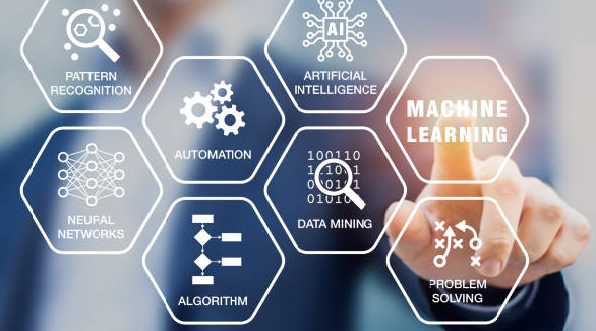Machine Learning- Introduction, Importance and its need in Today's World
Machine learning (ML) is a subset of artificial intelligence (AI) that involves the use of algorithms to enable systems to learn from data, without being explicitly programmed. In other words, ML allows computers to learn from examples and experience, rather than relying on hard-coded instructions.
The process of ML involves feeding large amounts of data into an algorithm, which then uses statistical techniques to find patterns and relationships within the data. These patterns and relationships are used to make predictions or decisions about new data that the algorithm has not seen before.
ML can be used in a variety of applications, including image recognition, natural language processing, fraud detection, and personalized marketing. It has become increasingly important in recent years as more and more data is being generated and collected by businesses and organizations.
There are three main types of ML: supervised learning, unsupervised learning, and reinforcement learning. Supervised learning involves training an algorithm on labeled data, where the desired output is known. Unsupervised learning involves finding patterns in unlabeled data. Reinforcement learning involves training an agent to interact with an environment in order to maximize a reward.
Overall, ML has the potential to revolutionize many industries by enabling more accurate predictions, faster decision-making, and the automation of repetitive tasks. However, it also presents ethical and social challenges, such as the potential for bias and the impact on employment.
Importance of Machine Learning:
Machine learning (ML) has become increasingly important in recent years due to its ability to provide insights and predictions that were previously impossible or too time-consuming to obtain. Here are some key reasons why ML is important:
Data-driven decision-making: ML algorithms enable businesses and organizations to make data-driven decisions, which can lead to better outcomes and increased efficiency. For example, ML can help predict customer behavior, identify patterns in financial data, or optimize supply chain operations.
Automation: ML can automate repetitive tasks, allowing humans to focus on more complex and creative work. For example, ML can automate image recognition, natural language processing, or even legal document analysis.
Personalization: ML can be used to personalize experiences for individuals, such as targeted advertising or personalized healthcare recommendations.
Improved accuracy: ML can analyze large amounts of data quickly and accurately, reducing the potential for human error. This can lead to more accurate predictions and better decision-making.
Innovation: ML has the potential to drive innovation in many industries, such as healthcare, transportation, and finance, by enabling new products and services that were previously impossible or too costly to develop.
Overall, ML is important because it enables businesses and organizations to extract insights and value from data in ways that were previously impossible. It has the potential to transform many industries and improve outcomes for individuals and society as a whole.
Need of Machine Leaning:
Machine learning (ML) is needed to address the growing complexity of data and the need to extract insights and value from it. Here are some key reasons why ML is needed:
Increasing amounts of data: With the explosion of digital data, it has become increasingly difficult to manually process and analyze large amounts of data. ML algorithms enable computers to process and analyze data quickly and accurately, making it possible to extract insights that would otherwise be impossible to obtain.
Complexity of data: The data generated by modern systems is often complex, unstructured, and heterogeneous. ML algorithms are designed to handle such data and can automatically find patterns and relationships within it, enabling insights and predictions to be made.
Speed and scalability: ML algorithms can process large amounts of data quickly and at scale, making it possible to analyze massive datasets and derive insights in real-time.
Automation: ML algorithms can automate many tasks that were previously performed manually, such as image recognition, natural language processing, and fraud detection. This reduces the need for human intervention and frees up time for more complex and creative work.
Personalization: ML algorithms can personalize experiences for individuals, such as personalized recommendations or targeted advertising. This improves the user experience and can lead to increased engagement and loyalty.
Overall, ML is needed to enable organizations to make sense of the increasing amounts of complex data generated by modern systems. It provides a way to automate tasks, extract insights, and make predictions that would be impossible or too time-consuming to obtain manually.






Comments
Post a Comment